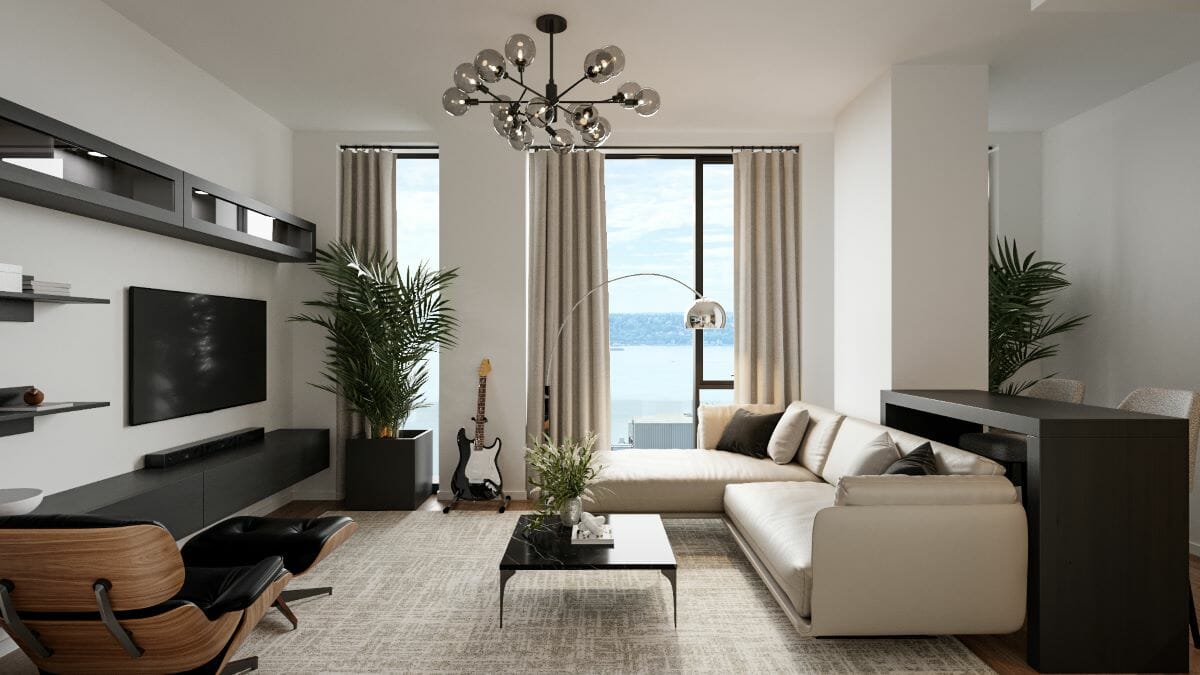Living in a studio or a small apartment doesn’t mean sacrificing comfort, style, or functionality. With thoughtful planning and creativity, even the smallest spaces can be transformed into inviting, personalized, and efficient homes. Whether you’re settling into your first studio or refreshing a current setup, these decorating tips will help you maximize every square foot.
Define Functional Areas Without Walls
One of the most effective ways to make a studio feel more spacious is by creating distinct zones for activities without erecting walls. Use rugs to separate spaces; a rug under the bed defines a sleeping area, while another in front of the sofa marks the living space. Arrange furniture strategically—position a sofa with its back to the bed to divide living and sleeping zones. Incorporate open shelving, folding screens, or curtains as room dividers to help segment the space while keeping it open and airy.
Choose Multi‑Functional Furniture
When space is limited, furniture must do double or triple duty. Think versatility and storage. Sofa beds or daybeds combine sleeping and seating in one piece. Ottomans with internal storage offer seating and hidden space for blankets or books. Opt for extendable dining tables that adapt to small dinners or larger gatherings. Wall‑mounted fold‑down desks serve as workstations or vanity tables while saving floor space.
Maximize Vertical Space
If you can’t expand outward, build upward. Vertical storage solutions are indispensable in a studio apartment. Use tall bookshelves to utilize height and create storage. Install wall hooks, pegboards, or magnetic strips to hang keys, cookware, or tools. Consider floating shelves above your bed, desk, or kitchen counter to stylishly display plants, artwork, or essentials.
Embrace Natural and Layered Lighting
Light affects how spacious a room feels. Maximize natural light by choosing sheer curtains or light-filtering blinds. Keep windows clean and unobstructed. Layer your lighting with overhead fixtures, table lamps, and floor lamps to add warmth and dimension. Add mirrors to reflect light and make the space feel brighter and more open.
Stick to a Cohesive Color Scheme
A consistent color palette creates harmony and makes the space feel larger. Light neutrals—white, beige, light gray, soft pastels—reflect light and visually open the area. Infuse color through accents like throw pillows, art, and decorative accessories. Avoid high-contrast palettes that can fragment the space visually.
Prioritize Minimalism and Declutter Often
Clutter overwhelms small spaces quickly. Keep only what you need and love. Store, donate, or discard unnecessary items. Choose furniture with hidden storage—beds with drawers or coffee tables with compartments. Maintain clear surfaces to preserve a cleaner, more spacious feel.
Personalize with Purpose
Decorating a small space balances function and style. A single large piece of art makes a strong, uncluttered statement. Add indoor plants for a touch of nature and fresh air. Curate personal items—books, photos, keepsakes—displayed purposefully. Ensure everything visible serves a design or functional role.
Think Outside the Box with Storage
Creative storage is key. Look for hidden spots to stash items. Use under-bed storage boxes for off-season clothing or linens. Hang hooks behind doors for bags or robes. Place organizers inside cabinets for shoes and accessories. Use stylish baskets and bins to keep open storage areas tidy.
Choose Lightweight and Portable Pieces
Mobility helps adapt the space. Try nesting tables that tuck away when not used. Have foldable chairs for guests that are easy to store. Use rolling carts as movable bars, workstations, or storage. These flexible items let you reconfigure the layout to suit different needs.
Keep the Floor Flowing
A continuous floor visually opens up the space. Stick to one type of flooring throughout to prevent visual breaks. Use area rugs to define zones without overwhelming the flow—opt for neutral tones or patterns that complement your palette.
Layout Tricks for Small Spaces
Experiment with furniture arrangements. Floating the bed centrally with nightstands on each side mimics a bedroom layout. An L-shaped sofa defines the living area and uses corners efficiently. Mount your TV on the wall to save surface space and maintain clean lines.
Use Color and Texture to Add Depth
Color and texture can add dimension. Cool hues like blue or green recede visually, making it feel larger. Layer soft textiles—throws, cushions, rugs—for comfort and tactile interest. A monochromatic palette with varied texture keeps things visually engaging yet cohesive.
Display Everyday Items Creatively
Visible storage can be decorative. Use attractive containers for kitchen or bathroom essentials. Store neatly folded towels or dishes on open shelves. Feature beloved books or items as part of the decor by arranging them thoughtfully.
Add a Touch of Nature
Plants bring life to small spaces. Use small potted plants on shelves or window sills. Hang planters or install a vertical garden. Select low-maintenance options like pothos, snake plants, or succulents.
Keep It Flexible and Evolving
Allow for change. Use removable wallpaper or peel-and-stick tiles for easy updates. Rotate artwork and accessories seasonally to refresh the look. Small layout tweaks can make the space feel brand new.
Final Words: Make It Your Own
Decorating a studio means crafting a home that fits your life and style. Through smart storage, multifunctional furniture, cohesive aesthetics, and purposeful personal touches, you can design a space that’s spacious, beautiful, and uniquely yours.
